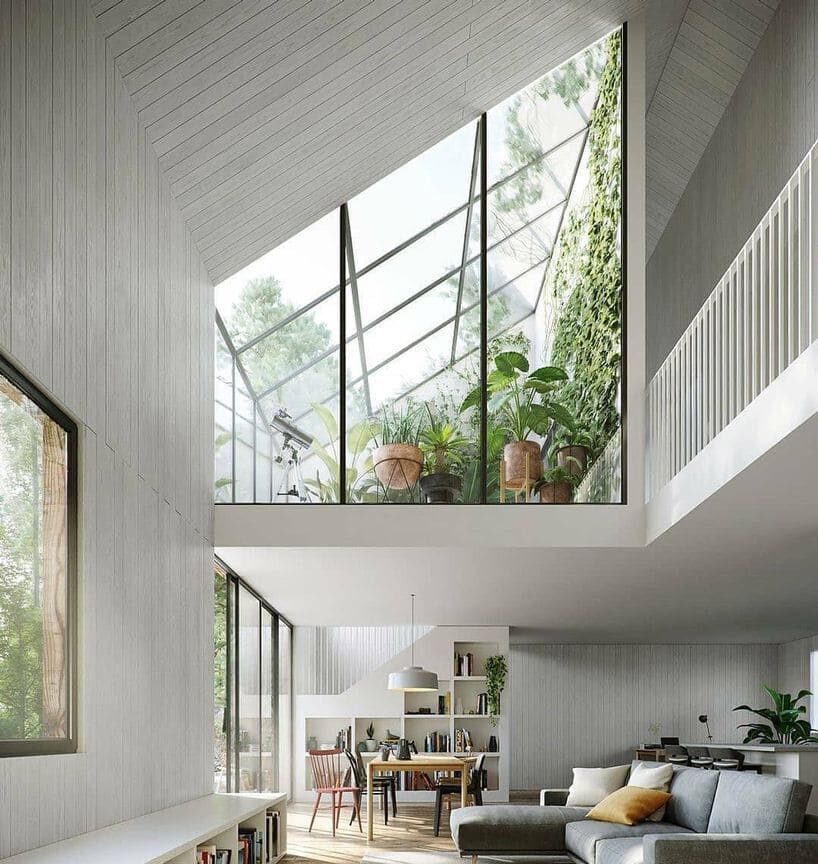
We all know the famous Beatles song, "Here Comes the Sun" which offers a powerful message of hope and rebirth through the arrival of sunlight after a long, cold and inhospitable winter. Its lyrics convey a sense of relief and joy as the sun reappears, bringing warmth and brightness into people's lives.
Natural light is a fundamental component of life on Earth that profoundly influences human well-being, plant growth, and the balance of ecosystems. Since the dawn of time, light has guided the planet's natural rhythms, shaping behaviors, life cycles and biological adaptations. It is not surprising, therefore, that this precious resource has also inspired countless artistic expressions, reflecting its beauty and regenerative power through songs, paintings, photographs, architecture, etc.
We humans have evolved in close relationship with the natural cycles of light and dark. This relationship is orchestrated by a complex biological system known as the circadian rhythm, which regulates numerous physiological and behavioural processes. It is an approximately 24-hour cycle that governs a wide range of biological functions, including
This kind of internal biological clock is mainly influenced by natural light. Daylight acts as an important signal for our body and helps us synchronize physiological activities with the external environment. Chronobiology is the scientific discipline that studies biological rhythms in living organisms, including human beings.
Natural light plays a crucial role in regulating the sleep-wake cycle. During the day, exposure to sunlight suppresses the production of melatonin, a sleep-inducing hormone. This helps maintain wakefulness and alertness. On the contrary, during nighttime hours, the absence of light promotes the production of melatonin, facilitating sleep. Adequate exposure to natural light during the day is essential to ensure quality sleep. A lack of natural light can lead to sleep disorders, such as insomnia and sleep fragmentation.
Light also has a significant impact on individuals' mood and mental health. Exposure to sunlight increases the production of serotonin, a neurotransmitter that contributes to a sense of well-being and happiness. Low serotonin levels may be associated with depression and other mood disorders.
Given the importance of natural light, it is essential to design the environments of daily life in order to favor its integration. This is the focus of Biophilic Design, which prioritizes natural and artificial light in line with our circadian rhythm in its protocols.
In work environments, the use of natural light can improve employee productivity and well-being. Large, well-positioned windows allow sunlight to penetrate the interior spaces, significantly reducing the need for artificial lighting. It is important to avoid glare and increased temperature within buildings. Low-emissivity glass can be used to limit heat transfer inside the building. Alternatively, external or internal screening, for example created with vegetation, can be used to control the warming effect. The positioning of workstations must be carefully considered to avoid visual discomfort and glare on computer screens. You must also ensure that reflective surfaces within the office should also be arranged to prevent disturbing reflections.
Studies have shown that people who work in environments with abundant natural light tend to be more productive, less stressed and more satisfied with their jobs. Additionally, natural lighting can reduce fatigue and improve visual comfort, creating a healthier and more stimulating work environment.
In schools, exposure to natural light can improve students' academic performance. Well-lit classrooms promote better concentration and greater involvement. The use of large windows, skylights and views towards internal courtyards can ensure adequate natural lighting during the day. Natural light can also have a positive effect on students' mood and behavior, reducing stress and improving psychological well-being. Furthermore, well-lit classroom environments can stimulate creativity and curiosity, promoting more effective and enjoyable learning for both students and teachers.
In homes, natural light is essential to create a comfortable and healthy environment. Designing residential buildings that maximize the integration of natural light can improve the quality of life for occupants. Well-positioned windows, skylights, the use of light colors and some reflective surfaces can increase the amount of natural light, creating bright and welcoming spaces. The use of adjustable curtains and blinds allows control over light intensity, adapting it to different needs during the day and in various seasons. Furthermore, the presence of natural light in homes can improve mood and mental health, reducing the risk of depression and anxiety.
At Verde Profilo, the topic of natural light is of fundamental interest, because we know well that indoor and outdoor plants depend on natural light, which is crucial for their growth, flowering, and even rest. Correct exposure to natural light helps plants maintain optimal metabolic balance and respond appropriately to day and night cycles.
NATURAL LIGHT NOT ONLY SUPPORTS LIFE, BUT ALSO ENRICHS OUR DAILY EXPERIENCE, MAKING THE WORLD A BRIGHTER AND HARMONIOUS PLACE.




















